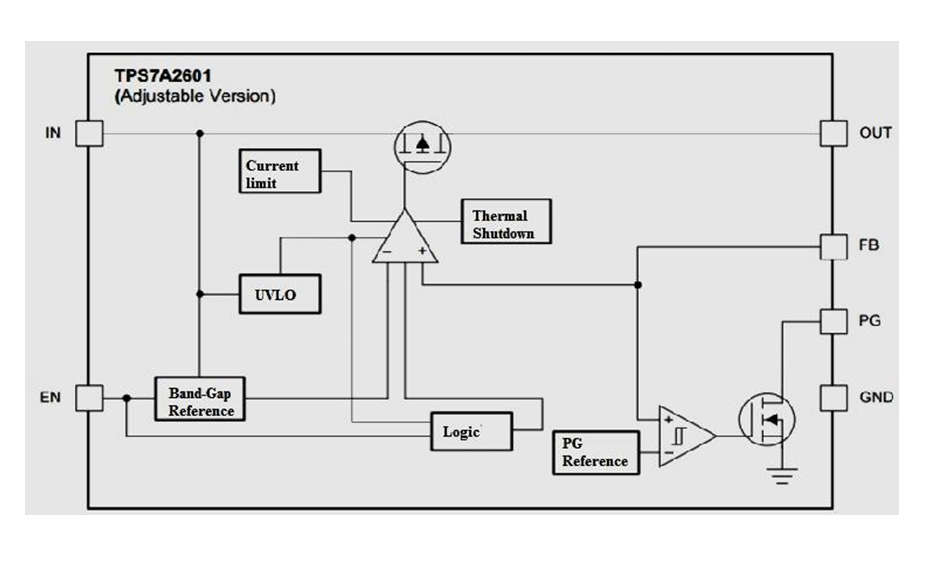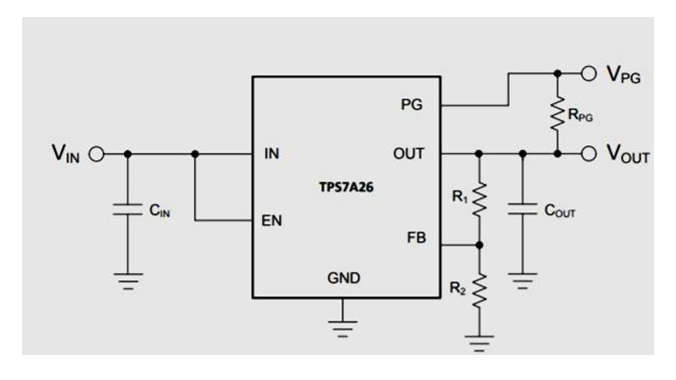- TPS7A26 is a power-good low dropout linear voltage regulator. TPS7A26 characteristics have proven to be an ideal choice for portable devices, as it is available in both adjustable and fixed voltage versions.
- This device has a very low quiescent current, which aids in extending the life of portable devices’ batteries. In an adjustable version, this IC uses feedback divider resistors to gain more flexibility and higher output voltages. TPS7A26 can provide microcontrollers with precise regulation.
Block Diagram of TPS7A26

Current Limit:
- An internal current limit circuit is provided to protect the regulator during transient high-load current faults and sporting events. The output voltage is not regulated when the device is in current limit mode. When the current limit is reached, the device begins to heat up due to an increase in power dissipation.
- If a thermal shutdown occurs, the device is turned off. The thermal shutdown circuit activates the device after it has been cooled. This device includes a separate Under voltage lockout circuit that monitors the input voltage.
Functional Modes:
- TPS7A26 operates in three modes- Normal operation, Dropout operation, and Disabled mode.
Circuit Diagram

Adjustable Device Feedback Resistors
- External feedback divider resistors are required to set the output voltage in the adjustable voltage version of the TPS7A26. The feedback divider resistors R1 and R2 are used to set the output voltage using the equation VOUT = VFB X (1 + R1/ R2).
Recommended Capacitor Types
- Low equivalent series resistance capacitors should be used at the device’s input and output for stability. When using multilayer ceramic capacitors, exercise caution. Regardless of the ceramic capacitor type used, the effective capacitance varies with operating voltage and temperature.
Input And Output Capacitor Requirements
- If the source impedance exceeds 0.5, an input capacitor is recommended. The input capacitor improves the device’s transient response, input ripple, and PSRR.
- The use of an output capacitor improves the device’s dynamic performance. A capacitor with a value of less than 50F is recommended.
Reverse Current
- Because the device lacks a reverse current protection circuit, it can be damaged when reverse current occurs. If reverse current is expected in the application, a protection circuit should be applied externally.
Applications of TPS7A26
TPS7A26 Low dropout voltage regulator applications include the following
- TPS7A26 is used in Home and building automation circuits.
- Multicell power banks use this voltage regulator.
- TPS7A26 also finds applications in smart grids and metering.
- Portable power tools make use of features of TPS7A26 LDO.
- Motor drives use TPS7A26.
- White goods also use a TPS7A26 voltage regulator.
- TPS7A26 proved to be an ideal choice for Portable Appliances.
